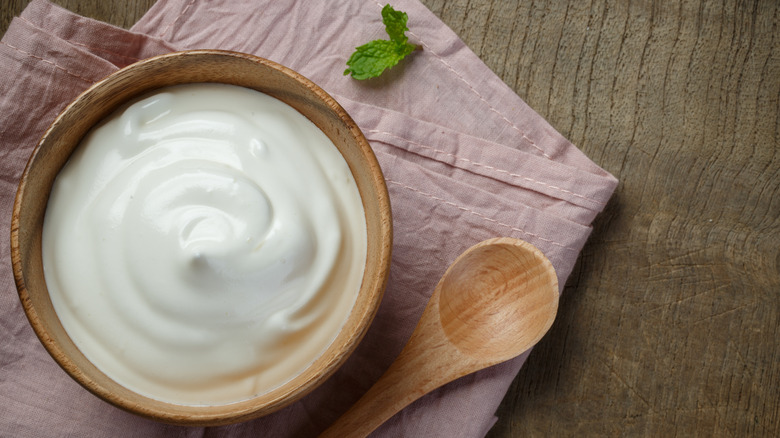It may seem like a strange question even to ask, but yes, yogurt can be effectively used in the garden. Bacteria is used to create lactic acid and is fermented. Whey is produced in the process. This whey is what’s used in the garden to stop powdery mildew. Several studies have shown promising results from using whey as a way to control mildew problems in the garden when applied to infected leaves. It’s important to note that more research is needed before it can be deemed a legitimate gardening hack, but as it stands, it’s likely to yield some positive results.
Powdery mildew is aptly named for its white, powdery appearance on leaves. It’s a fungal disease with many plant-specific variants; the powdery mildew that attacks grapes isn’t the same as the one that attacks squash, for instance. So, while you may have an outbreak on one plant, it may not affect the others. Still, it can spread incredibly quickly, and getting rid of infected plants as soon as possible is important. Perhaps this urgency is what led people to test something like yogurt as a solution. How convenient to be able to slow down the spread with something from your kitchen!
Why yogurt seems promising

Yogurt whey is tricky business. It’s produced when making regular yogurt and removed when making Greek yogurt, becoming a byproduct you may see as a liquid on top when you open the package. If the excess whey isn’t disposed of properly, it can become an environmental hazard by running off into the water supply, killing fish, and leaving an unpleasant smell. It may sound like we shouldn’t be trying to convert it into a mildew-fighting product, but when used in smaller quantities, it can do a world of good for your plants. In a study published in the Journal of the Australasian Plant Pathology Society, milk and whey caused damage to the powdery mildew fungi in just 24 hours. The study says it may be due to the oxygen radicals produced when the milk was exposed to natural light, and those radicals are what fight against the fungi.
A study in Scientia Horticulturae in 2008 and another published in the BIO Web of Conferences in 2024 both show that a whey treatment was more effective against powdery mildew at higher dosages. The 2008 study specifies that a concentration of 25-30% was the most effective at slowing down the spread of the disease. In these studies, the whey didn’t kill the fungal disease, but it did slow the spread. So, while yogurt can’t be used to stop it completely, it can at least be used to severely hinder its success in your garden.
How to use yogurt in the garden
If you usually have yogurt on hand or you often accidentally let it go to waste, give it a try in your garden. The first way you can go about doing this is by separating the whey from your yogurt, which you can do with cheesecloth and a strainer. Line your strainer with two to three layers of cheesecloth, put the yogurt on top, and collect the liquid whey that drips out in a bowl or jar. Dilute it with water so that the mixture is 70% water and 30% whey, and pour it into a spray bottle. Another option is to mix 1 tablespoon of plain yogurt with 1 cup of water.
With either option, add them to a spray bottle and spray them as needed in your garden. You can either use it to prevent the spread of powdery mildew or to slow down the spread of an existing powdery mildew outbreak. Spray it on the leaves in the evening so it won’t scorch the plant during the day.